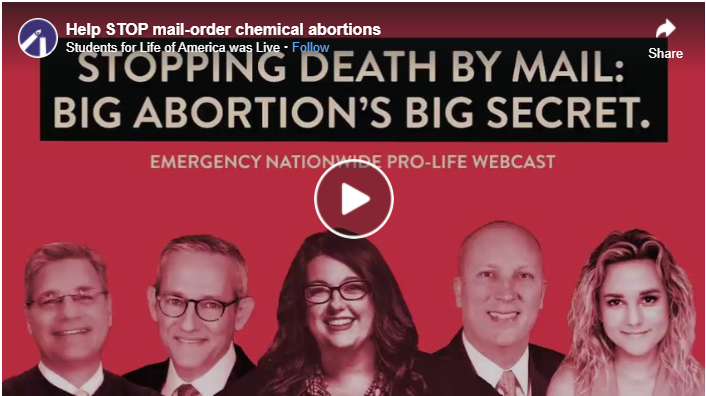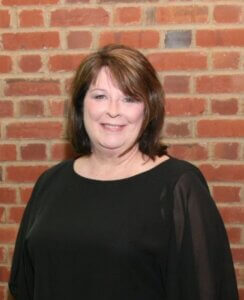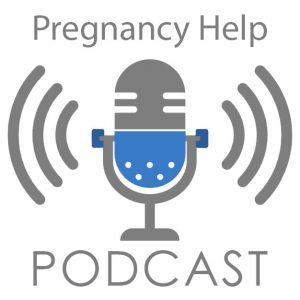Jennifer Wright
5 Tips to Creating a Billboard Campaign
Do you have a heart to reach women with alternatives to abortion? If so, we are grateful you do! We often get questions from people just like you looking for a way to point women in the midst of an abortion decision to our resources with billboard campaigns. Below are tried and true tips to make an effective billboard campaign.
1. Keep it short!
Billboards are best read further than 500 feet away, so you have a short time to connect your message to those driving by. The average driver has about 5 to 10 seconds to view your billboard design, read any text, and comprehend the message, so try for fewer than 10 words total. (Yes, that includes URLs and phone numbers!)
2. Go big!
Text-wise, that is. Make sure any text in your design is printed in clean, bold font to ensure the best readability. Also, the larger the font, the more time a driver has to read and understand your message at a distance, so go big!
3. Be bold!
Colors are your friend here. Use bright colors or a bold image in your design to effortlessly attract eyes to your billboard. Contrasting colors within the design will also create an even bigger impact that will help improve the retention of your message.
4. Location, location, location!
Highways and high-impact areas (such as next to an abortion clinic) are key locations. If you post in an area near a highway where you know many travel from, you can equip women along the way. For billboards located very close to abortion clinics, you can reach women with a message of care and support both entering and exiting the location.
5. Keep it simple!
Fun, trendy billboards have their place; however, this mission is serious. Don't try to be clever or cute with the wording on a billboard in a way that distracts from the mission. Anything that requires a second look will lose potential clients.
Here are a few samples that might help get you started with a billboard campaign in your area!
.jpg)
.jpg)
.jpg)
.jpg)
.jpg)
.jpg)
.jpg)
5 Principles of Ministry Growth
by Mary E Peterson, Housing Specialist
Heartbeat International
I was young and a little crazy when we started the pregnancy help organization. Someone said to me, in jest, "You are just too naïve to realize what you are attempting can't be done." Looking back, they were probably right. But nonetheless, God took me on a wild adventure of organizational development. Within fifteen years, I had the joy of sitting on my couch brainstorming the basics of a vision for a start-up ministry and I also had the joy of ribbon-cutting on our fifth location. For better and for worse, I experienced rapid organizational growth and learned a lot of lessons along the way. Here's a taste:
1) Know your mission. Grow from your mission.
I love a crazy new idea and lots of them were thrown at us -- run a ministry restaurant, start a theater troupe, build a neighborhood of low-income housing for single mothers. All of these captured my attention for a time but ultimately, were set to the side to stay focused on our core mission. Be really good at what you're good at. Be the ministry that the Holy Spirit breathed life into. Let the other stuff go...even if they seem wildly interesting.
2) Balance administrative growth with programmatic growth.
Programmatic growth is the fun stuff and it's the work that grantors and donors get excited about. But it is through building an administrative foundation that programmatic growth is sustained. Sometimes years’ worth of fundraising, staff development, and system building has to be done in order to grow well. If the foundation isn't strong, having the perfect furniture doesn't make sense.
3) Spend time on systems.
Systems are the plumbing to your organization -- getting information where it needs to go so that when you need it, it's there. Without systems, the entire organization experiences stress. Sometimes leaders who are great at big visions aren't great at systems. If that is case, get the right people involved to help build out the systems for your ministry. Growth is always disruptive but less so when strong organizational systems are in place.
4) Be wise and prudent. Be bold and courageous.
I love it when Scriptural ideas seem at odds, and this is a great example. Both statements are absolutely true. Plan, strategize, research, and consider. But also, dream, stretch, act, and step out in faith. Have a Board and staff around you that can do both!
5) Don't get ahead of your team.
The hard part of being a leader of vision is bringing the whole organization along. If you get too far ahead of them, you risk staff frustration, team exhaustion, and organizational strain. My rule of thumb as a leader was to peak ahead a few steps to see what major decisions lay ahead. I would begin to think about those decisions and gather information so that when it was time to consider them, we weren't starting from a blank slate. But your team needs to go on the journey with you -- and you might need to take the pace down to travel together!
Want to talk more about growth related ideas? Join us for a webinar on Growth and Ministry Development July 22, 2021 at Noon (Eastern)!
The American Promise - Life, Liberty, and the Pursuit of Happiness
by Jor-El Godsey, LAS
President, Heartbeat International
On Sunday, we celebrated the 245th anniversary of the promise of America.
The United States of America was founded upon the idea that, “We hold these truths to be self-evident, that all Men are created equal, endowed by their Creator with certain unalienable Rights, that among these are Life, Liberty, and the Pursuit of Happiness – That to secure these Rights, Governments are instituted among Men…”
This idea hasn’t always lived up to its promise. America's minorities, even women, were not counted and even prohibited from contributing as full citizens for much of our nation’s history. Thankfully, today the promise of America does include all nationalities, cultures, and colors. All can legally pursue the blessings of liberty.
Unfortunately, as we in the pregnancy help movement know too well, for the tiniest of Americans, that promise is non-existent.
And the consequences of that broken promise to babies living in the womb is 63 million abortions since 1973. A legally sanctioned holocaust, right under our nose denying these millions the first right necessary for all others – life.
You and I agree: We have a long, long way to go to fully realize the true meaning that “all Men are created equal.” For the smallest and most vulnerable among us, we have work to do.
And we are doing it!
We see your work to assist and care for each and every woman at risk of abortion today in adoption agencies, maternity homes, medical clinics, and pregnancy help centers, and we celebrate you. We are so grateful to you for continuing to work, day in and day out, to provide the love and support women need to make a life-affirming decision about the miracle inside of them.
As a network and a movement, we continue to press new frontiers in the fight against abortion, like the Abortion Pill Rescue® Network (APRN), which has helped over 2,000 women, and counting, get a second chance at choice after taking the abortion pill.
After the backyard BBQs and family and celebrations, take a moment with me to say a prayer for the unborn. Pray that the promise of America – Life, Liberty and the Pursuit of Happiness – would include the unborn boys and girls of every family, every culture, and every color.
Love in Real Life
by Kirk Walden
“Therefore, though I have enough confidence in Christ to order you to do that which is proper, yet for love’s sake I rather appeal to you . . .” Philemon 8-9A
If I Corinthians 13 is the scriptural chapter which best describes love, perhaps the brief letter we call the Book of Philemon is one which best shows us love in action. Because if we follow the examples of Paul, Onesimus and Philemon, those around us will see a powerful picture of what love looks like, in real life.
Let’s set the stage. Onesimus was a slave of Philemon. An indentured servant, one might surmise. But Onesimus ran away, no small infraction. To understand how egregious this was, in the culture of the day it wasn’t uncommon to execute runaway slaves.
But a funny thing happened after Onesimus snuck away to freedom. He found Paul, converted to faith in following Jesus Christ, and launched a partnership with the man who would become the most prolific of New Testament writers.
At some point however, Onesimus—perhaps guided by a new conscience—likely confessed to Paul that he was a runaway. Or Paul found out through other means and Onesimus confessed his past. Regardless, this admission was a dangerous one. But Onesimus came clean, out of love for Jesus Christ and a desire to follow—no matter the personal cost.
The story gets even more interesting however, when we find out Paul not only knew the master of Onesimus but had a close relationship with him. This was such a strong relationship that Paul sat down and penned the letter to Philemon which we read and study today.
Paul knew he could say the word and Philemon would do anything Paul asked, including freeing Onesimus. But as we see throughout this letter, Paul chooses instead to express love for Philemon, and to appeal to Philemon’s love for Jesus.
Remember when Jesus told us the two great commandments were to love God and to love others? In this letter, Paul puts this into practice.
Out of his love for God, Paul chooses to love Philemon—just like Jesus taught. Onesimus? He chose love by returning to Philemon with letter in hand, willing to take any punishment Philemon required.
Love from Paul. Love from Onesimus. And with this letter, it was up to Philemon to complete the circle.
Paul requests that Philemon not only release Onesimus, but to shift his entire view of his former slave. Paul presents Philemon with the challenge to consider Onesimus—a slave—as an equal, as a brother in the work of advancing the good news (v.15-17).
This was a monumental request, but Paul was confident his brother Philemon would not only honor this request but out of love, go beyond what he was asked (v.21).
While none of us knows for certain how Philemon responded, we can draw an educated conclusion that he did. Why? Because this short letter of only 335 words—tucked between letters to Titus and to the Hebrews—was so revered by the early church that it made its way into the New Testament.
As we look back on this brief letter from one Christ follower to another, it’s stunning to see what love—acted out in real life—can accomplish.
Consider:
Paul poured his heart into Philemon over the years, building Philemon from “convert” to “fellow worker” for the faith (v.1). This is love.
Onesimus owned up to his wrong, returning to Philemon with a heart of submission and a desire for sincere reconciliation. This too, is love.
Next of course, is the man whose name is on the letter, Philemon. We can be confident Philemon responded with our favorite word, Love.
What were the results of each of these men choosing love?
First, the obvious. For Philemon and Onesimus, the wall between “slave” and “master” fell to the ground. We can guess, Onesimus and Philemon came together as shining lights for the Good News, a stunning example of love in action for friends, neighbors and the community at large. Without a doubt, when people saw these men, many were attracted to this new faith.
Next, as we already pointed out, the early church likely heard the story of these three and of the extraordinary example set, choosing to place this letter in what we refer to as The New Testament. This way, every Christian could read and hear of the impact love can have.
One more thing. Centuries later, this “little” letter was used in Christian countries to argue for the abolition of slavery altogether.
Three men. Each of the three choosing love. They changed their world, and the world to come.
All of which leads to a question. What could happen if each of us, when faced with any situation in front of us, chose love?
Our love might look like Paul’s, pouring into another through encouragement and hope, as we do for fellow staff members and so many who call on our ministries daily. The cost? Time. Effort. Emotional and physical energy.
Or love could look like it did for Onesimus, taking a risk and offering to right a wrong we knowingly or unknowingly created days, weeks, months or years ago.
And love could mean being a Philemon, choosing to forgive even when it costs us. For Philemon, forgiveness meant risking social standing in a community which likely demanded slaves be kept “in their proper place.” And it also meant giving up any right to the work an indentured servant could offer.
It’s hard to see Paul, Onesimus and Philemon saying to themselves, “If I practice love, the effect of this decision will bring thousands or even millions to faith and contribute to the abolition of slavery. One letter outlining this episode will be read by billions across the globe.”
No, they had none of this foresight. But they chose to love.
So, as we consider the people and the real-life situations in front of us, let’s take heart, remembering that choosing love is always a wise decision. We may not see the results today, but we know choosing love has the capacity to change . . . even the world.
Want proof? Let’s ask the three men we read about in the letter to Philemon. If they were to look back on a real-life story about a runaway slave, they might just agree.
Special thanks to Tom Haddon, pastor of Northfield Church in Hendersonville, TN for two sentences on a Sunday morning which prompted Kirk to dig into the story of Paul, Onesimus and Philemon. You never know the impact a pastor’s words might have!
Kirk Walden is Heartbeat International’s former Advancement Specialist, and now works with Heartbeat on special projects such as this. Connect with him via email at This email address is being protected from spambots. You need JavaScript enabled to view it.. For speaking engagements, contact Gloria Leyda at Ambassador Speakers Bureau.
How You Can Use ThisIsChemicalAbortion.com
by Andrea Trudden, Senior Director of Communications & Marketing Heartbeat International
Heartbeat International
ThisIsChemicalAbortion.com is the site featuring a new docuseries that seeks to inform about the “dangerous new frontier for the abortion industry,” chemical abortion.
Produced by Charlotte Pence Bond, daughter of former Vice President Mike Pence, the This is Chemical Abortion project also has Heartbeat International and Students for Life of America (SFLA) as partners.
Through the docuseries and the website, we hope to educate and inform the general public as well as call individuals to action to stand against big abortion and the threat of chemical abortion.
Combining educational information with personal stories, the docuseries is designed to inform the general public of this popular new form of abortion. As use of the abortion pill has severely increased over the past three years – aggressively during the pandemic – it is more important than ever to ensure that our staff and supporters understand the dangers of such a drug.
Magazines and television shows increasingly promote “self-managed abortions at home” and even mail-order abortions. All the while, women are left alone throughout the entire abortion process. This is heartbreaking and we need to be equipped at our pregnancy help organizations to serve these women.
For the women who have taken the first abortion pill and immediately regret their abortion choice, we can point them to AbortionPillReversal.com. Here, they will be connected to a healthcare provider who can help them try and reverse the effects of the abortion pill, giving them a second chance to choose life.
For the women who completed their chemical abortions, we can provide healing and hope through abortion recovery services.
We know that the best alternative to abortion is a supportive person. While the methods of abortion may be changing to omit the human element altogether, our work remains. We are here to care for women and help them make positive choices for their lives.
If you have not yet done so, we encourage you and your staff to watch the docuseries. Share it with your supporters on your social media and via email. This is the world in which we live and we must be ready to combat these new weapons of the enemy to save these women from the pain of abortion.
The five short videos (about 10 minutes each) are housed on the ThisIsChemicalAbortion.com site and can also be accessed via Heartbeat’s website.
Thank you for your heart to serve! You were called into this movement for such a time as this.
Motherhood and Bonding in Maternity Homes
by Sharisa McDaniel, Transitional Living Program Manager at Catholic Charities of Eastern Oklahoma
The setting of a Maternity Home and Transitional Living offers a unique opportunity to influence the parenting practices of residents and family dynamics for generations to come. At Madonna House and St. Elizabeth Lodge in Tulsa, Oklahoma, team members observe parenting practices that range from healthy and loving to harsh and disconnected. In an effort to positively shape the futures of the families in the programs, the Transitional Living team at Catholic Charities of Eastern Oklahoma regularly examines the environmental influences and program initiatives to promote bonding and connectedness. As the family programming at Madonna House and St. Elizabeth Lodge has developed and evolved, the following adjustments have been made to the environment:
- Most “containers” (bouncy seats, swings, bumbos, exersaucers, etc.) removed from the maternity home to promote mothers holding their babies.
- Rolling basinets were removed to promote mothers holding their babies rather than pushing them down the hallways.
- “Stroller Parking” was established to promote mother’s holding and carrying their babies in the home, rather than pushing them in strollers or keeping them contained in car seats.
- “No Phone Zones” established in offices to encourage mothers to find more appropriate means of entertaining their children during provider appointments (toys instead of screens).
- Songs, rhymes, and games are posted throughout the home to promote positive interactions between mothers and their children.
- The program curfew establishes healthy routines for mom and baby.
Catholic Charities has also established a Family Enrichment position to pro-actively educate parents on child development and to offer experiences that help to build healthy bonds. With a background of teaching early childhood education for nearly 20 years, Angela Grissom brings her experience and her passion for educating parents to the Family Enrichment role. Residents of Madonna House and St. Elizabeth Lodge meet with Angela every week to participate in parent-child activities and learn positive parenting practices. The Family Enrichment program offers:
- Talking is Teaching, a city-wide campaign that promotes reading to children ages 0-5 and provides free books and parenting curriculum.
- Readers to Leaders, another early childhood reading program that also includes songs, rhymes, and games that provide bonding experiences for mothers and their little ones.
- Education and guidance on the PACEs (the flip side of ACES (Adverse Childhood Experiences) – Positive and Compensatory Experiences), 10 experiences children need to live successful lives.
- I Love You Rituals by Dr. Becky Bailey– bonding songs, rhymes, and games that include eye contact, touch, playfulness, and presence.
- The Whole Brain Child by Dr. Daniel J. Seigel and Tina Payne – Parenting strategies that promote connection before correction.
- The Parents as Teachers Home Visiting Program – Each session includes a parent-child interaction, development-centered parenting education, and family well-being guidance.
With these efforts, mothers report:
- learning new parenting methods that focus on a bond of love,
- creating healthy routines that benefit their babies development and sleep schedule,
- establishing rituals that provide a sense of meaning in their family routines,
- establishing habits of reading with their children,
- using Whole Brain strategies to successfully navigate difficult behaviors,
- greater awareness of the experiences that influence their children’s success in life and school.
The Family Enrichment program at Madonna House and St. Elizabeth Lodge is a pro-active approach to influencing strong bonds within resident families for years to come.
Stronger Future Fathers: Escaping the Testosterone Trap
by Joe Malone, PhD, CPT, LWMC, CFE
Father’s Day brings pleasant thoughts to some young men especially about time spent with their loving fathers, and unpleasant thoughts to others, whose fathers didn’t do as good of a job raising them. In some cases, this was due to the fathers, who as younger men, were finding themselves attracted to women who were not their wives. In some cases, they acted on that attraction, which led to the breakup of their marriage and the end of their precious family unit. This is such a tragedy to everyone involved when it happens, and it can be avoided if young men can gain knowledge about how their minds and bodies work differently from young women’s in young adulthood.
Biology, psychology, and sociology all influence young men’s sexual behavior. It is especially influenced by brain anatomy and biochemistry. It is so beneficial for males to understand the forces that are at work in their brains and bodies that have both biochemical and societal origins. The circumstances these forces help create can truly fashion a “Testosterone Trap” in which our young men find themselves ensnared. This is to their detriment as well as those with whom they have interacted and particularly the women in their lives.
Males need to learn that they hit their peak testosterone levels at age 17 and overall levels only begin to decline by 1% a year after age 30. The average man has 7 to 8 times as much testosterone as the average woman and some high-testosterone men have up to 183 times as much as low-testosterone women. The male brain has 2 ½ times more space than the female brain devoted to sex drive which is activated by testosterone, and also has a larger brain center for action and aggression. This means that sexual thoughts run through a man’s mind far more frequently that they do a woman’s. A man’s brain chemistry can create a craving for new sexual experiences the same way an addict’s brain craves cocaine or heroin. Its main ingredient, dopamine, plays a major role in motivation and reward, surging before and during pleasurable activities like sex. Dopamine in a man can especially be boosted by novel partners. All of this is only a possibility, though, not a foregone conclusion. Humans are a species that, because of our unique, proportionally large brains and their executive decision-making cerebral cortex, can override our basic instincts.
When males bond with a female and create an ongoing trust relationship their testosterone levels begin to drop and their bonding chemical, vasopressin, begins to rise. When they marry this woman, the love of their life, testosterone levels drop even more as vasopressin rises higher. When this couple has children, the young father’s testosterone levels fall even more, and their vasopressin bond grows even stronger. This leads to many health benefits for both the wife and the husband but by far, it benefits the husband the most. For example, married men have better immune systems, they report lower levels of depression and stress, and they are less likely to commit suicide or murder. Finally, married men are 250% less likely to die prematurely than divorced men from any cause. It seems that God has designed marriage and fatherhood as a strong pathway for men’s well-being.
Socrates’ famous philosophical statement is “know thyself.” When I was a young man, I often wondered what he meant. I believe as I have lived life, I have come to understand his meaning. By learning to know themselves and especially their chemistry young men may be able to better self-manage and forge a more positive future for themselves and our greater society. They are sure to become wiser and better men in the process. And they are sure to become better fathers and raise happier children who will have many joyous and memorable Father’s Day’s with the man they want to grow up and be just like. We all have an opportunity to be that man. Let us take it!
 Dr. Joe Malone taught for many years at Middle Tennessee State University and has guest lectured at Vanderbilt, Princeton, Catholic University of America as well as other major universities. He holds a Ph.D. in Health and Human Performance with a minor in neuropsychology and a specialization in women’s health and sexual wellness. He is the former Chair of the Nashville Community Health and Wellness Team and the current Topic Network Chair for Health Promotion for the Study of Emerging Adulthood. Dr. Malone draws from his life experiences as a former model, Division I college football player and coach, celebrity trainer, elected official, and husband and father in his teaching. He has been happily married to his wife Jody for over 40 years. He is coauthor of Battles of the Sexes and founder of Sex IQ.
Dr. Joe Malone taught for many years at Middle Tennessee State University and has guest lectured at Vanderbilt, Princeton, Catholic University of America as well as other major universities. He holds a Ph.D. in Health and Human Performance with a minor in neuropsychology and a specialization in women’s health and sexual wellness. He is the former Chair of the Nashville Community Health and Wellness Team and the current Topic Network Chair for Health Promotion for the Study of Emerging Adulthood. Dr. Malone draws from his life experiences as a former model, Division I college football player and coach, celebrity trainer, elected official, and husband and father in his teaching. He has been happily married to his wife Jody for over 40 years. He is coauthor of Battles of the Sexes and founder of Sex IQ.
Dad's Day 2021
by Jor-El Godsey, President
Heartbeat International
“Two are better than one…” says the preacher in Ecclesiastes. Because, well, the word “Ecclesiastes” actually means “preacher.”
Of course, this can be both a controversial statement on parenting structure and a statistical parenting reality in success metrics for children.
It is, after all, that we find in Ecclesiastes - the encouragement for connection revealing that “Two are better than one because they have a good return for their labor; for if either of them falls, the one will lift up his companion…”
Enter the dad.
Whether biological, adopted, or spiritual, a dad fits into God’s design that “two are better than one.”
God, Himself, declared this of Adam even while still in the perfection that is the Garden (Genesis 2).
A dad brings many things to the family.
Okay, more than “Dad Jokes” and the globally recognized meaning of “Pull my finger.”
With our eyesight, it is best to have two eyes in order to have the best sense of depth perspective.
With our hearing, two ears can better sense distance and motion from the sounds we hear.
With parenting, a dad adds a dimension of perspective to the lives of children.
When our kids were small, my wife, Karen, was more quickly inclined to say “be careful” at the playground, while I was often quick to say, “How high can you go?” At the pool our directives were similarly disparate.
Our perspective on exploring our world was somewhat different.
Dads often see the world in terms of the challenge.
I’m guessing most kid trips to the Emergency Room started with the phrase, “Watch what I can do, Dad!”
That’s why two are better than one. We need both perspectives – be careful and push farther.
Let's be sure to celebrate the fathers in our movement and the future fathers who walk into our organizations in a particular way this Father's Day.
Always Remember the Miracle
Servants of Excellence
And when they were filled, He said to His disciples, “Gather up the leftover fragments that nothing may be lost.” John 6:12
We all know the story of the feeding of the five thousand with five loaves and two fish. A great multitude was following Jesus and when it came time to eat, Jesus asked Philip where they might buy bread for everyone.
When Philip noted they only had 200 denari—not enough to buy what they needed—Andrew jumped in and mentioned a child was carrying five barley loaves and two fish. But of course, Andrew added, “But what are these for so many people?”
Obviously, this wasn’t enough food. Instead of panicking, Jesus asks the multitude to sit down. He then takes the loaves and fishes, gives thanks and . . . somehow there was enough food for thousands. A miracle, no doubt. But what happened next, after the miracle feast?
There was some food still available, so Jesus told his disciples, “Gather up the leftover fragments that nothing may be lost.”
Fish would easily spoil, so the disciples let that go. But of the extra bread, they filled twelve baskets with what wasn’t eaten from just five loaves of bread.
But why? Couldn’t Jesus just make more? Was the Son of Man suddenly becoming frugal? Or worse yet, a hoarder?
One possible explanation is that the next time the disciples were hungry, the leftover bread would serve as a reminder of the miracle. Can we imagine what it was like to munch on bread that literally came out of nowhere, and was likely the best tasting bread they’d ever had?
Perhaps then, Jesus simply wanted to retain this bread to keep the miracle fresh in the minds of the disciples. So, as challenges came up, they could take a bite and say, “No worries, we’ll be fine. This bread proves it.”
The question for us is, what are our miracles? And what are the reminders? Do we keep that ultrasound photo on the wall—the one from the mom who didn’t think she could choose life, but did?
How about the funds that came from nowhere when we didn’t know if our ministry would make it? Did we write down this story, so we won’t forget?
Or, what about the staff member who was in a crisis? After we prayed for her, we got that call to say, “It’s a miracle—we’re going to be okay!” How are we remembering this?
Jesus reminded His disciples to keep the bread. Maybe he was just trying to be a good steward. But perhaps there was more—a reminder to keep our reminders fresh, and grow our faith in the process.
by Kirk Walden, Advancement Specialist
Succession Planning for Maternity Housing
by Peggy Forrest
Most of us would agree that any organization’s ability to successfully carry out its mission is tied to the quality of its leadership. Be that a President, CEO, or Executive Director - the effectiveness of that person’s leadership, makes a difference. So, it’s easy to understand why it is mission critical to ensure the next leader will be the correct one, and the transition from one leader to the next will be as smooth as possible. This is especially true in maternity housing because of the deeply personal nature of the work. Leadership transition is critically important, and having a plan guiding that effort will help reduce the stresses which accompany such a transition. Succession planning takes focus and effort. It involves the Board of Directors working in partnership with the current leader.
A succession plan has three main goals:
- Guide the Board in the recruitment and selection of new leadership.
- Facilitate a smooth transition
- Maintain continuity of operations and organizational sustainability
A succession plan contemplates:
- Planned departures
- Unplanned departures
- Internal talent development
A succession plan should include:
- A timetable - from notice to end of transition period
- A review of organization’s strategic direction
- The development of a leadership profile
- A recruitment strategy
- An onboarding and transition plan
- A communication strategy
Regardless of the age of your Agency, or the tenure of your leader, succession planning may be a timely and important topic to address during your Agency’s next strategic planning efforts.
Listen in to a podcast from Mary Peterson and Emily Prins on the same topic of succession planning!
Heartbeat International has additional information related to succession planning in our Governing Essentials Manual. Click here to find out more.

